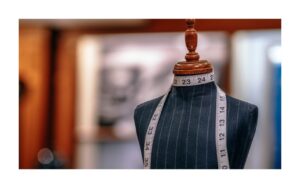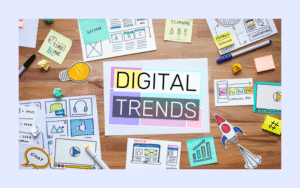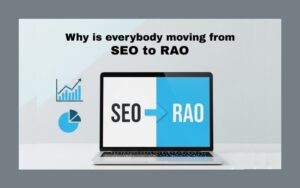When looking back at the history of fashion, it’s hard not to see that the styles of the time mirror the cultures, identities, and dreams of the people who wear them. From the flowing robes of ancient civilizations, to the tailored suits of the 1900s, and the minimalist athleisure wear of today, Fashion is a story told through its design. Arriving hotfooting along the ages, how this tale is presented to the masses has drastically altered.
Glamorous fashion stages like the catwalk, luxurious magazine layouts and the windows of department stores were the places to visit for the latest fashions, but today the fashion talk happens on a totally different level, essentially in the internet space. Today, online marketing is not only assisting, it’s the backbone of how the entire world perceives fashion. At the top and bottom ends of the scale, from fast fashion to haute couture, one-off designers to sustainable start-ups, all these now rely on digital marketing to remain in the game.
Following the heels of the internet and e-commerce revolution, individuals found themselves suddenly empowered to shop at home, a Parisian salon could be shopped by an individual in Tokyo, and a collection introduced in New York could be purchased by an individual in Bangalore on the same day. Websites then became high-street shops in the cyberworld, and spending money on flashy website design and hosting is as vital an investment as having the best fabrics and design houses at your disposal. If your site is clunky, scrappy, or just plain dysfunctional, it can ruin the image of even the most illustrious brands.
Underpinning it all is a digital marketing strategy. Search Engine Optimization allows the necessary brands to show up when someone searches “best cocktail dresses under $200” or “eco-friendly sneakers.”. Writing about trends, producing guides on caring for fabric, or posting styling advice not only informs readers but keeps brands in front of search engines. Social media can build viral hype, but SEO builds consistent visibility that carries on well beyond the lifetime of a hashtag. Again, web design and hosting packages come into play. A poorly loading or non-mobile-optimized site will rank low, regardless of how good the content is.
Content is also central to fashion storytelling. Consumers are not buying clothes; they are buying the vision, identity, and ideology of the brand. A luxury fashion brand may focus on its tradition and craftsmanship through documentary clips. A streetwear brand may focus on collaborations and culture. A sustainable brand may document its supply chain to show ethical sourcing. This story builds emotional connections, more powerful than basic advertising. Everlane has created committed followers via outrageous transparency, while Reformation employs humor as well as an eco-friendly narrative that resonates with young generations.
Personalization is another bedrock of online fashion branding. Customers nowadays expect brands to know their preferences and give them what they require. Artificial intelligence makes this possible. Algorithms track surfing history, past purchases, and even time spent on products to suggest outfits and accessories. Chatbots assist with fitting and styling, and push notifications alert customers when products on their wishlist reappear. All these personalized touches create loyalty since they make customers feel seen. None of this could happen without a strong digital infrastructure. Overloaded data loads, hosting, and web design involving AI-fueled tools are what propel personalization from gimmick to smooth, memorable experience.
In the future, the intersection of fashion and digital marketing will increase. The metaverse is a peek at a world where virtual apparel equals its physical counterpart. Avatars will be walking virtual runways in virtual fashion found exclusively in NFTs. Artificial intelligence will aid in the design of collections, foretelling what will be sought after before cloth is ever cut. Sustainability will continue to be in the spotlight, and digital platforms will allow brands to highlight their ethical methods of work through provable, traceable evidence. Individuals won’t purchase products; they’ll invest in experiences that blend physical and digital worlds.

But in the midst of all these innovations, there is one thing that does not change: fashion brands need a strong digital foundation. Nice hosting, nice design, and good websites are as important as imagination or fabric. Without them, even the most stunning collection can be overlooked in the din of the web. This is why web hosting and design packages are not an added expense but an investment for any brand that wants to succeed in the web era. Whether a new brand employing Shopify to reach its initial customers or a fashion brand walking digital fashion weeks, the virtual shopfront is the focal point of brand-customer interaction.
Fashion, by nature, is cyclical. That which fades into obscurity almost always finds its way back, be it the return of low-rise jeans, the resurgence of old-school sneakers, or the comeback of corsetry in modern design. But internet marketing has changed the pace of these cycles. Rather than trends returning decades later, they come back in a few years, even months, due to the speed with which online spaces recycle nostalgia. Y2K looks can be brought back by TikTok creators using second-hand items, and overnight global brands are scrambling to capitalize on the surging demand once more. Not only are digital spaces reflecting cultural change, but also actively driving it at breakneck speed.
With this incessant acceleration, storytelling has become even more crucial. In a saturated market where hundreds of new items materialize every day on e-commerce websites, the customer is not merely purchasing an ensemble—they are purchasing into a story. A retro-style dress is more than a dress; it is sold as a celebration of self, nostalgia, and nonconformity with fast fashion. A limited-release sneaker drop is promoted as a cultural event, not a shoe drop. Online marketing enables these narratives to connect with customers in real time, stratified across different touchpoints, from teaser promotions on Instagram to live-launched releases on brand sites. The infrastructure to achieve this visibility still boils down to the basics: a strong digital backbone driven by solid web architecture and hosting plans, so when the limelight hits, the stage doesn’t collapse from traffic overload.
The other twist to this tale is the evolving consumer psychology. Unlike the previous decades, consumers of the present want more than aesthetics. They want value alignment. To younger audiences, sustainability, inclusivity, and transparency are not buzzwords but determining criteria in purchasing behavior. Digital marketing allows brands to show these commitments as actions. Campaigns point out eco-friendly materials, feature diverse models, or give glimpses of fair manufacturing procedures behind the scenes. Stella McCartney or Patagonia are examples of brands that have pioneered this territory, creating fashion while promoting responsible consumption. By online storytelling, they have made what could have been specialty interests mainstream expectations. But even in the case of values-based messaging, delivery groundwork is essential. A green movement campaign cannot take hold if the landing page takes too long to load or if a charity platform attached to purchases breaks down. Online ideals need online dependability, and again, here’s the value of combining creativity with functional web design and hosting packages.
Community-building has also emerged as one of fashion’s biggest online strengths. Traditionally, a brand’s community was mostly composed of individuals who shopped in its stores or signed up for its magazine ads. Today, the community is online, fostered by brand-created hashtags, interactive competitions, and user-generated content. Fashion is not only consumed; it is joined, with customers creating their own versions of brand-inspired outfits and earning fame for doing so. For example, brands such as Balenciaga and Gucci have fostered remix culture, in which fans recast campaigns or build memes that, ironically, make the brand’s power stronger rather than weakening it. Online marketing benefits from this engagement because it turns customers into advocates. A loyal group is much more powerful than a single advertisement. But to maintain such engagement, brands need to make sure that their platforms are as inviting as their narratives. A well-crafted site with seamless hosting becomes the community’s gathering place, where discussions, loyalty rewards, and special content come together seamlessly without fail.
In looking to the future, it is certain that data will underpin a lot of fashion’s digital transformation. Each click, each wishlist item added, and each cart abandonment reveals something about consumer desire. These innovations will reshape how people shop, but they all require significant digital horsepower. Digital creativity cannot stand apart from digital practicality, which makes choosing the right web design and hosting packages more vital than ever. Despite all these developments, the human factor will still shape fashion. Behind the glitz is infrastructure, and yet again, web design and hosting packages are the quiet heroes making the story happen seamlessly.
Finally, fashion today in the digital age is not a battle between creativity and technology but their blend. The vision of the designer and strategy of the marketer meet in digital spaces that engage, inspire loyalty, and project identity. Fashion has been able, through digital marketing, to reflect culture, but also to lead culture, influence conversations, subvert norms, and create global communities. What was once for the few is now for the many, and that democratization has redefined fashion in modern times. As long as brands keep striking a balance between art and digital roots, the future of fashion will stay diverse, inclusive, and universally relevant.














